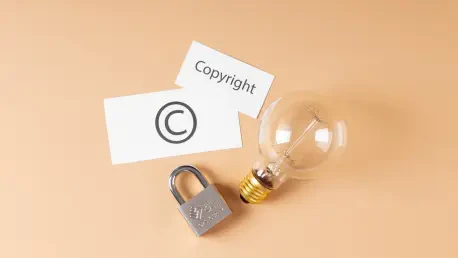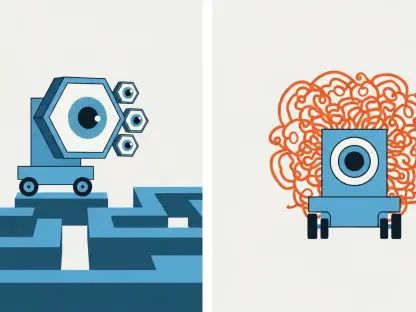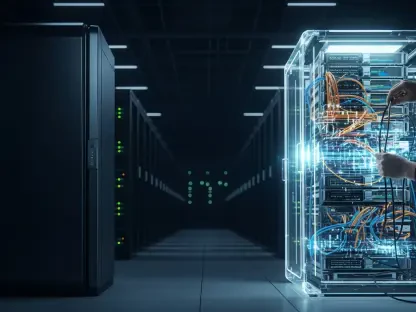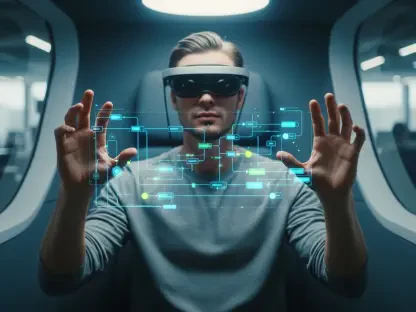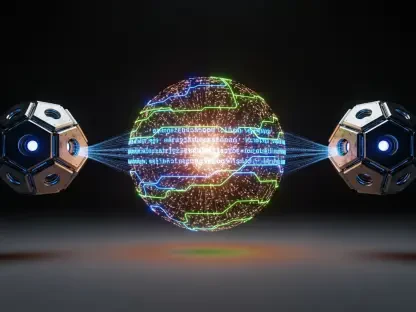In an era marked by rapid technological advancements, the intersection between artificial intelligence (AI) and intellectual property rights has emerged as a contentious battleground; the current dispute centers on AI companies utilizing copyrighted materials without explicit consent to train their machine learning models. This conflict is pivotal for both AI developers and content creators, affecting the delicate balance between innovation and the protection of creative rights. As AI technologies become increasingly sophisticated, the question of what constitutes fair use versus copyright infringement holds broader implications for future technological, legal, and cultural landscapes.
Corporate Perspectives and Legal Arguments
Tech Giants’ Position on Fair Use
AI companies, including industry leaders like OpenAI, Anthropic, Google, and Meta, argue that the use of copyrighted material is a form of fair use, crucial to fostering innovation. They contend that access to creative works without direct permission allows them to refine algorithms, leading to advances that benefit society. These corporations stress that restricting the flow of information could hinder technological progress, leaving the field open to less scrupulous entities. Such assertions emphasize fair use as a catalyst that aids in keeping AI at the forefront of innovation, underscoring a broader industry ethos that prioritizes progress over traditional copyright rules.
The legal debate over fair use versus infringement presents a complex spectrum where technology and creativity intersect. Numerous stakeholders, ranging from individual creators to multinational conglomerates, express divergent views on fair use definitions. While AI companies maintain that the use of vast datasets is transformative, thereby not infringing copyright, creators counter that this justification risks devaluing original content and potentially jeopardizes their livelihoods. The discussion traverses a broad legal space where AI firms cling to innovation as a defense while creators argue for compensation and recognition.
Implications of Economic Disparities
The economic chasm between tech conglomerates and creators is another focal point in this debate. While AI companies stand on the precipice of valuations that could reach trillions, authors, artists, and musicians often find themselves on the lower rungs of financial success, with median incomes that underscore industry disparities. This disparity raises questions about equity and ethics in technology, where the financial benefits of AI are juxtaposed against the economic struggles of those whose works fuel these technological advances. The debate over compensation and recognition brings to light the moral responsibilities of AI giants toward the very creators whose work bolsters their financial windfalls.
Efforts to address this imbalance are gaining traction, with some publishers, music companies, and non-profit organizations campaigning for fair compensation models. However, the alignment between creators and larger entities remains fraught with tension, often evident in compensation structures. The initiatives aiming to rectify the power imbalance often reveal underlying frictions, highlighting disparities in how creative efforts are valued and rewarded. As these stakeholders endeavor to redefine compensation dynamics, the conversation expands beyond economic terms, probing the ethical dimensions of content consumption and technological utilization.
Government and Judicial Involvement
Regulatory Challenges and Government Role
Government intervention plays a pivotal role as the debate over AI and copyrights continues to unfold. Agencies like the US Copyright Office highlight potential overreach by tech companies, concerned about unauthorized access to creative content. The evolving landscape calls for regulatory frameworks that reconcile the interests of creators and innovators. However, skepticism abounds regarding the efficacy of government intervention, amplified by recent political shifts that have influenced leadership in key offices. This backdrop underscores the challenges inherent in crafting policies that balance the needs of disparate groups while fostering continued innovation.
Changes in leadership and political dynamics contribute to uncertainties in regulatory approaches. As lawmakers consider new copyright schemes, stakeholders watch cautiously, aware that legislative developments have far-reaching consequences. The intricacies of policy reform highlight the delicate balance between providing adequate protection for creators while fostering an environment conducive to technological advancement. As the legal landscape continues to shift, ongoing discussions emphasize the necessity for laws that are adaptable, equitable, and reflective of the diverse interests at play in this intricate arena.
Legal Precedents and Future Directions
Key legal cases, like that of Thomson Reuters v. ROSS Intelligence, offer a glimpse into potential judicial interpretations of copyright issues in AI. Courts considering such cases may set precedents that shape how fair use is perceived in the context of AI. The judgment in this case revealed that wholesale copying for AI training could infringe on copyright when it adversely affects the market for original works or lacks transformative value. Decisions like these provide hope to creators that the judiciary may eventually recognize and protect their contributions, ensuring AI developments respect existing intellectual property laws.
As courts weigh in, their rulings signal shifting tides in how AI’s relationship with copyright is perceived. Judicial decisions play a significant role in defining the boundaries of fair use, offering a framework for companies and creators to navigate this complex landscape. The outcomes of these legal battles could drive AI companies to reassess their practices, potentially ushering in a new era of mutual recognition and respect for creative rights in AI innovation.
Balancing Innovation and Creativity
The Dichotomy between AI and Creative Rights
In a fascinating turn, AI companies vigorously defend their own creations while liberally leveraging others’ works, revealing a paradox in their stance on intellectual property. The defense of proprietary AI models against infringement by firms like DeepSeek illustrates a protective approach contrary to their leniency with acquiring creative materials. This inconsistency highlights an undervaluing of creative works compared to technological assets, presenting a challenge for advocates striving for equitable recognition across industries.
The conversation around AI and copyright extends to broader cultural implications, raising concerns about AI’s impact on creativity. As machine-generated content becomes pervasive, fears persist that genuine artistic expression could be overshadowed, leading to a dilution of creative integrity. Authors and thought leaders voice concerns about AI’s potential role in diminishing independent thought, drawing comparisons to literary scenarios where technology eclipses human creativity. The dialogue emphasizes the need for vigilance against an over-reliance on AI, ensuring that creativity remains a human-led endeavor.
Ethical Considerations and Future Outlook
The stakes of this conflict extend beyond current financial and legal realms, touching upon future cultural and ethical landscapes. As the nuances of AI-driven content evolve, there’s an urgency to ensure originality isn’t compromised in favor of efficiency. Creators express apprehension about a future where digital outputs surpass human-generated creativity, potentially eroding qualities that define artistry and independent thought. The discourse encourages reflection on the ethical dimensions of AI, focusing on preserving creative integrity in the face of technological progress.
The resolution of this debate holds significant implications not only for economic and legal frameworks but also for the very essence of creativity in an AI-driven world. Striking a balance between incentivizing technological advances and safeguarding creative rights demands nuanced solutions that transcend conventional boundaries. As stakeholders envision future interactions between AI and creative domains, the challenge lies in crafting paths that empower both innovation and artistry to thrive in harmony.
Shaping the Future of AI and Creativity
In today’s rapidly evolving technological landscape, the clash between artificial intelligence (AI) and intellectual property rights has become a central issue. At the heart of this conflict is the use of copyrighted materials by AI companies without explicit permission to train their machine learning models. This debate is critically important for both AI developers and content creators, as it impacts the delicate balance between fostering innovation and protecting creative rights. As AI systems grow more advanced, we must closely examine what constitutes fair use in contrast to copyright infringement. This question holds significance for current developments and also has far-reaching consequences for future technological advancements, legal interpretations, and cultural evolution. The outcome of this dispute will likely influence how we handle intellectual property in an era where machines increasingly contribute to creativity, raising complex challenges and the need for navigating ethical and legal frameworks in the age of AI.
